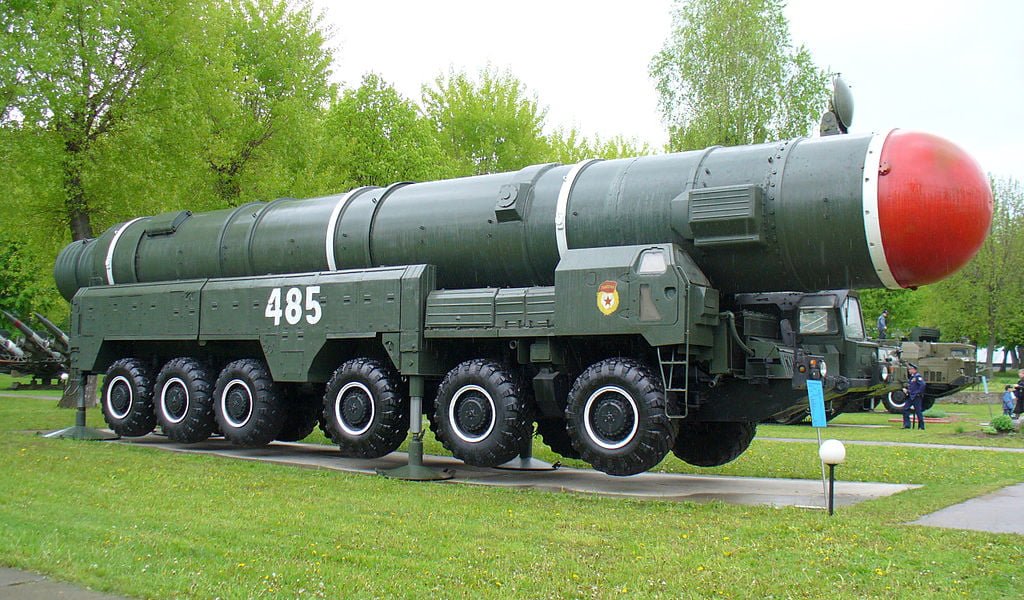Pakistan could become the 5th largest nuclear state in less than 10 years, according to experts studying the development of nuclear weapons around the world. In the Aug. 31 edition of the Nuclear Notebook, Hans Kristensen and Robert Norris warned that the 140 to 150 nuclear warheads Pakistan currently has could swell to between 220 and 250 by 2025.
Pakistan stockpiles nuclear weapons
Kristensen and Norris, who are both with the Federation of American Scientists (FAS), used satellite images of army and air force bases in Pakistan to estimate the number of nuclear warheads the country has right now. They published their findings in the Bulletin of the Atomic Scientists last week.
The FAS team reported that they saw delivery systems and mobile launchers in addition to the nuclear warheads. They also say the nation’s fissile material production efforts are increasing, and they observed a number of underground facilities which they believe could have something to do with the development of nuclear weapons.
Pakistan has been building its capabilities as a nuclear state much more quickly than U.S. officials expected two decades ago. The U.S. Defense Intelligence Agency projected in 1999 that the nation would only have 60 to 80 nuclear warheads by 2020.
Pakistan’s nuclear state capacity is increasing rapidly
According to the report in the Bulletin of the Atomic Scientists, Islamabad is currently developing “several” delivery systems and has set up four reactors to produce plutonium. The nuclear state has also been expanding its uranium enrichment capacity.
The FAS team expects Pakistan’s nuclear stockpile to continue growing throughout the next decade. However, they’re unsure of just how quickly that stockpile will increase. They cited several things that will significantly impact the speed at which the nation is able to increase its stockpile of nuclear weapons. For example, they said the number of launchers Islamabad want to put into service will impact the rate of nuclear development.
They also believe the amount of growth observed in India’s nuclear weapons program will indirectly impact the rate at which Pakistan grows its nuclear capabilities. The two nations have a long-running history of hostility toward each other, so Islamabad will certainly want to keep up with New Delhi in terms of the size of its nuclear arsenal. The Stockholm International Peace Research Institute reported earlier this year that Pakistan had passed India in the number of nuclear weapon it has stockpiled.
Pakistan likely to become the 5th largest nuclear state
After completing their analysis, the FAS team said they expect Pakistan to become the 5th largest nuclear state within the next seven years. They also emphasized that they believe reports suggesting Islamabad will be the 3rd largest nuclear state by 2025 are “exaggerated.”
To clarify, they explained that in order to achieve that higher ranking, Islamabad would have to build up a stockpile of more than 350 warheads over the next 10 years. To produce that many nuclear warheads, Pakistan would have to step up its production growth to two or three times the pace at which its stockpile has grown over the last 20 years. Realistically, they see the nation becoming the 5th largest nuclear state by 2025 if the current pace at which its stockpile of nuclear weapons is growing remains steady.
They also believe that if New Delhi doesn’t grow its nuclear arsenal dramatically or significantly increases its conventional armed forces, then Islamabad will likely start to level off its production of nuclear weapons.
Adjustments to nuclear policies aimed at India
Kristensen and Norris also explained that Pakistan has been adjusting its nuclear stance with the addition of short-range systems capable of launching nuclear missiles. They believe the goal of this adjustment is to “counter military threats below the strategic level” and “create a full-spectrum deterrent that is designed not only to respond to nuclear attacks, but also to counter an Indian conventional incursion onto Pakistani territory.”
U.S. officials have expressed concern about this adjustment, they add, citing concerns that this new stance may lower the threshold at which Pakistan will use nuclear weapons against India. The FAS team feels Washington has shifted its view Pakistan’s capabilities as a nuclear state “from confidence to concern,” especially since Islamabad introduced tactical nuclear weapons. The Trump administration expressed concerns that terrorists could steal Pakistan’s tactical nuclear weapons and “increase the likelihood of nuclear exchange in the region.”
However, Islamabad rejects these concerns, as officials there believe the security efforts around their nuclear weapons are sufficient. One Pakistani official said in 2013 that they only assemble a nuclear warhead at the last second before it will be used, and the warheads are kept in three or four pieces in different locations. Pakistani officials also see the short-range tactical weapons they added to their arsenal as a necessary means to block “the avenues for serious military options by the other side,” a likely reference to India.




